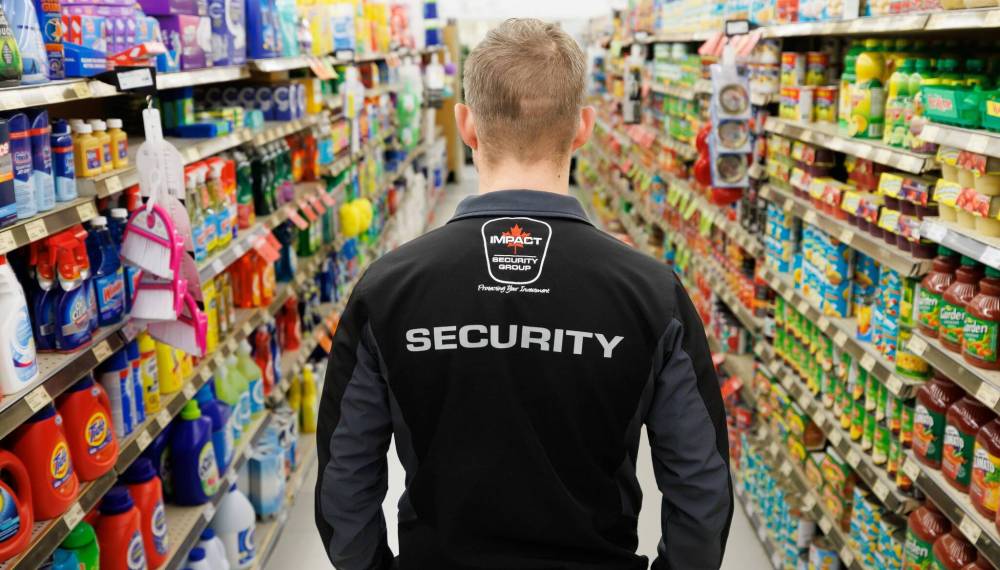
Shoplifting is bad right now. But is it really as bad as some would have us believe?
Every week, there seems to be more news stories detailing brazen acts of shoplifting, where thieves simply walk in and out of a store with whatever they want with little in the way of opposition or consequence.
This has certainly been the case at several of Winnipeg’s smaller, independently owned grocers, where unfettered shoplifting has manifested in violent confrontations between staff and thieves, and acts of extreme vandalism.
MIKE DEAL / FREE PRESS FILES In 2022 Winnipeg reported 4,186 shoplifting incidents involving items less than $5,000.
But a closer examination of this story reveals an industry where the biggest players appear to be using the pain and suffering of smaller retailers to hide unflattering narratives about unjustified price increases, record profits and poor treatment of workers.
To see the story behind the story, we first have to start with the Canadian retail industry’s narrative on shoplifting.
According to the Retail Council of Canada and many of the largest retail chains, shoplifting has become a $5 billion problem on an annual basis, driven largely by criminal gangs committing targeted thefts. It’s a pretty powerful story except that there isn’t a lot of data to back it up.
Although some theft goes undetected, police-reported shoplifting is a good way of determining whether the problem is getting worse.
In 2022 (the last complete year for which Statistics Canada data are available), Winnipeg reported 4,186 shoplifting incidents involving items less than $5,000, a 36 per cent increase over 2021.
However, given that in-store shopping was way down in 2021 because of pandemic restrictions, those numbers are misleading. In fact, when you look at pre-pandemic numbers, you can see the total number of shoplifting incidents in 2022 was well below what was reported in 2018 (5,104), 2019 (7,817) and 2020 (6,624).
What about organized retail crime, the main trend that retail lobby groups claim is driving a spike in shoplifting? When pressed, the industry has had a difficult time quantifying the total amount of losses due to criminal organizations.
Last year in the United States, for example, the National Retail Council was forced to retract a claim that criminal organizations were responsible for US$47.5 billion in annual inventory losses after independent experts questioned their methodology. The NRC no longer cites that number and admits it can’t really estimate the size of the problem.
That does not mean there is no organized retail theft. However, the vast majority focus on high-value items — cars, jewelry, electronics — that can be fenced easily in a world that allows unfettered online marketplace activity. When it comes to groceries, it is less about organized crime and more about three guys working together to steal meat and sell it out of the trunk of their car within hours of the theft.
And this brings us to what is probably the real story behind the story: shrink.
Shrink is a retail industry term that refers to the difference between the total number of items a store has in stock at any one time and its book inventory.
So, what drives shrink? In both Canada and the U.S., industry sources claim shoplifting (or external theft) accounts for just over a third of inventory loss. However, more than half is attributable to “process control failures” (items not scanned properly, bar code misreads) and internal employee theft.
More importantly, the annual increases in the shrink rate have remained relatively stable in both the U.S. and Canada, and are at or just below pre-pandemic levels. If there was an epidemic of shoplifting and organized retail crime as the industry claims, that annual number would be much higher.
So, why would the retail industry want to exaggerate the impact of shoplifting?
Academics and analysts that study the sector suggest that shoplifting in general, and the spectre of organized retail crime in particular, is an effective diversion from consumer concerns about unjustified price hikes and record profits. Big retail grocery chains in particular have been demonized for suspected price gouging.
This misdirection is particularly cynical given that while there are some organized efforts to steal food, many people are shoplifting basic items because they simply cannot afford to buy them at inflated prices.
The worst part of the retail industry’s shoplifting campaign is the way it leaves the real victims — smaller grocery stores — with no meaningful help.
Larger retailers have the resources and store layouts to implement more stringent security measures. All grocery stores will suffer some amount of shoplifting, but it is exponentially harder to steal a shopping cart full of meat from a Costco or Superstore than it is from a much smaller Food Fare.
Meanwhile, at independent grocery stores, staff can only look on with anxiety and concern as the same thieves show up every day with seemingly no consequences or deterrents.
Shoplifting is a difficult crime to curb given current economic conditions. Simple solutions, like the NDP government’s pledge of more police overtime, aren’t going to make things better.
It also doesn’t help if the retail industry is exaggerating conditions at the store level to take away from its other shortcomings.

Dan Lett
Columnist
Dan Lett is a columnist for the Free Press, providing opinion and commentary on politics in Winnipeg and beyond. Born and raised in Toronto, Dan joined the Free Press in 1986. Read more about Dan.
Dan’s columns are built on facts and reactions, but offer his personal views through arguments and analysis. The Free Press’ editing team reviews Dan’s columns before they are posted online or published in print — part of the our tradition, since 1872, of producing reliable independent journalism. Read more about Free Press’s history and mandate, and learn how our newsroom operates.
Read full biography
Our newsroom depends on a growing audience of readers to power our journalism. If you are not a paid reader, please consider becoming a subscriber.
Our newsroom depends on its audience of readers to power our journalism. Thank you for your support.

